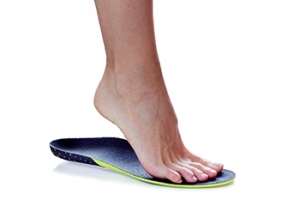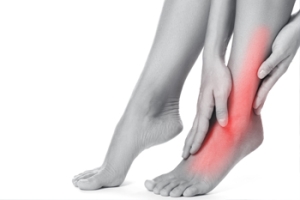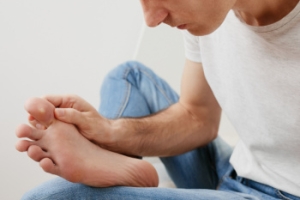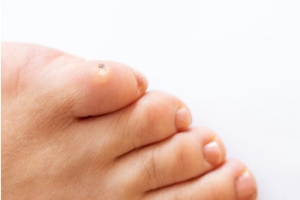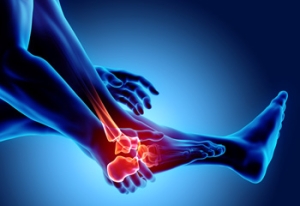
The Mysteries of Orthotics
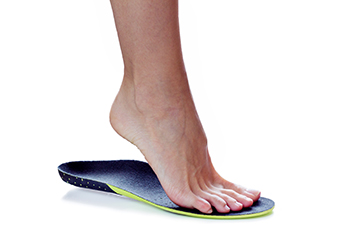
Patients often rely on podiatrists to understand how orthotics alleviate pain and prevent injuries. Determining the right orthotic type demands expertise in biomechanics, gait analysis, and understanding the patient's specific condition. Orthotics function by providing support, cushioning, and realignment to the feet, thereby correcting biomechanical abnormalities or imbalances. They distribute pressure evenly, reducing stress on vulnerable areas and promoting proper foot function. By stabilizing the foot and ankle, orthotics can correct issues such as overpronation or supination, which can lead to various foot and lower limb problems if left untreated. Additionally, orthotics can help improve posture and alleviate discomfort in other parts of the body, such as the knees, hips, and lower back. Podiatrists assess patients comprehensively to determine the most suitable orthotic design, material, and level of support to address their specific needs and enhance overall foot health and function. If you have chronic foot pain, it is suggested that you make an appointment with a podiatrist to determine if orthotics can help you.
If you are having discomfort in your feet and would like to try orthotics, contact one of our podiatrists from ABC Podiatry. Our doctors can provide the care you need to keep you pain-free and on your feet.
What Are Orthotics?
Orthotics are inserts you can place into your shoes to help with a variety of foot problems such as flat feet or foot pain. Orthotics provide relief and comfort for minor foot and heel pain but can’t correct serious biomechanical problems in your feet.
Over-the-Counter Inserts
Orthotics come in a wide variety of over-the-counter inserts that are used to treat foot pain, heel pain, and minor problems. For example, arch supports can be inserted into your shoes to help correct overarched or flat feet, while gel insoles are often used because they provide comfort and relief from foot and heel pain by alleviating pressure.
Prescription Orthotics
If over-the-counter inserts don’t work for you or if you have a more severe foot concern, it is possible to have your podiatrist prescribe custom orthotics. These high-quality inserts are designed to treat problems such as abnormal motion, plantar fasciitis, and severe forms of heel pain. They can even be used to help patients suffering from diabetes by treating foot ulcers and painful calluses and are usually molded to your feet individually, which allows them to provide full support and comfort.
If you are experiencing minor to severe foot or heel pain, it’s recommended to speak with your podiatrist about the possibilities of using orthotics. A podiatrist can determine which type of orthotic is right for you and allow you to take the first steps towards being pain-free.
If you have any questions please contact our office located in Columbus, OH . We offer the newest diagnostic and treatment technologies for all your foot and ankle needs.
Ankle Foot Orthotics for Athletes
Ankle foot orthotics are shoe inserts that offer support to control the placement and movement of the ankle, correct deformities, and compensate for weakness. These inserts are used to stabilize the foot and ankle and provide toe clearance during the swing phase of gate.
Athletes often suffer foot problems because their feet are not being supported within the shoe. Ankle and foot orthotics are custom made inserts that alleviate stress on the foot. However custom orthotics should be prescribed by a podiatrist who specializes in customized footwear and orthotics design. These inserts are used by athletes for different reasons. Runners use orthotics to absorb shock at heel contact and to set up the forefoot for push-off. Basketball players wear them to control their forefeet while jumping and running.
The two main types of orthotics are over-the-counter orthotics and custom-made orthotics. To be eligible for custom orthotics, an examination of the foot and ankle will need to be completed. Afterward, both the foot and ankle will need to be casted and fitted for the proper orthotic. When the fitting process is complete, adjustments can be made to make sure everything fits perfectly.
Over the counter orthotics tend to be more popular than custom fit ones. Athletes who have less severe aches and pains in the foot, ankle or lower back area can use the over-the-counter version of orthotics. Unfortunately, over-the-counter orthotics tend to not work in treating severe injuries or ailments. Whenever you suspect you may need an ankle foot orthotic, you should consult with your podiatrist to determine which type of orthotic is right for you.
Foot Dystonia
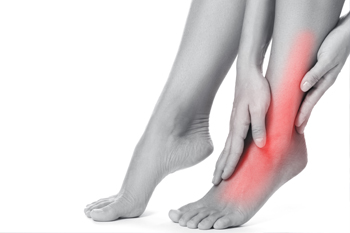
Dystonia is a neurological disorder causing involuntary muscle contractions and repetitive movements. When it affects the feet, it can lead to abnormal postures, twisting, and repetitive movements that affect mobility and balance. Foot dystonia can manifest as toe curling, arch cramping, or uncontrollable foot movements. These symptoms can cause discomfort, pain, and difficulty walking or standing. Additionally, foot dystonia may result in deformities, such as claw toes or high arches, over time. Treatment typically involves a combination of therapies, including medications, injections, and sometimes surgical interventions. If you or your child has unusual symptoms to do with movement of the feet, it is strongly suggested that you schedule an appointment with a podiatrist for an evaluation and diagnosis. Regular monitoring and adjustments to treatment plans may be necessary to address changes in symptoms and optimize outcomes.
Some foot conditions may require additional professional care. If you have any concerns, contact one of our podiatrists of ABC Podiatry. Our doctors can provide the care you need to keep you pain-free and on your feet.
Rare Foot Conditions
The majority of foot conditions are common and can be treated by a podiatrist. Standard diagnostic procedures are generally used to identify specific conditions and treatment can be rendered. A podiatrist also treats rare foot conditions which can be difficult to diagnose and may need extra attention and care.
There are many rare foot conditions that can affect children. Some of these can include:
- Freiberg’s disease
- Kohler’s disease
- Maffucci syndrome
Freiberg’s disease - This can be seen as a deterioration and flattening of a metatarsal bone that exists in the ball of the foot. It typically affects pre-teen and teenage girls, but can affect anyone at any age. Symptoms that can accompany this can be swelling, stiffness, and the patient may limp.
Kohler’s disease - This often targets the bone in the arch of the foot and affects younger boys. It can lead to an interruption of the blood supply which ultimately can lead to bone deterioration. The patient may limp or experience tenderness, swelling, and redness.
Maffucci syndrome - This affects the long bones in a child’s foot leading to the development of abnormal bone lesions. They are benign growths and typically develop in early childhood and the bones may be susceptible to breaking.
A podiatrist can properly diagnose and treat all types of rare foot conditions. If your child is affected by any of these symptoms or conditions, please don’t hesitate to call our office so the correct treatment method can begin.
If you have any questions please feel free to contact our office located in Columbus, OH . We offer the newest diagnostic tools and technology to treat your foot and ankle needs.
Rare Foot Conditions
A podiatrist will be able to address a variety of rare foot conditions, particularly the ones that affect children. The most common are Kohler’s disease, Maffucci syndrome, and Freiberg’s disease. They can be properly diagnosed by having an X-ray taken, but in more serious cases an MRI may be needed. Kohler’s disease generally affects younger boys and bone deterioration may result from an interruption of blood supply. Children who have Kohler’s disease may find relief when the affected foot is rested, and a special boot is worn. Benign growths in the long bones of a child’s foot may lead to the development of bone lesions, and this is known as Maffucci syndrome. People who have this condition find mild relief when custom-made orthotics are worn. Freiberg’s disease targets the ball of the foot and can typically affect pre-teen and teenage girls. The metatarsal bone becomes deteriorated and flattened, and common symptoms include swelling and stiffness. A cast is often necessary to wear with this disease as it can help to reduce existing pain. Erythromelalgia is a rare foot condition, and its cause is unknown. Symptoms of this disease can include intense burning pain and the feet may appear red or feel warm. Relief may be found when the affected foot is immersed in ice water. It can also be beneficial to elevate the foot frequently. If your child complains of foot pain, it is strongly suggested that you consult with a podiatrist who can diagnose and treat rare foot conditions.
Why Plantar Warts Come Back and How to Stop Them
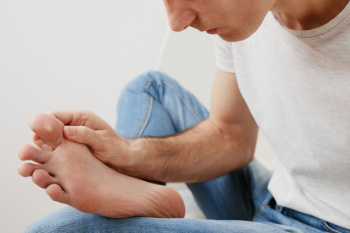 It can be frustrating to manage plantar warts that return after treatment. Plantar warts are a common foot condition that develop when the human papillomavirus, or HPV, infects the bottom of the foot. Plantar warts can come back because HPV can remain dormant in the skin even after visible warts are treated, making it possible for new warts to develop in the same spot or nearby. The skin tissue may also hold small, undetectable warts or viral particles in surrounding skin tissue, leading to more warts in the future. Additionally, a weakened immune system, exposure to HPV in communal areas, such as locker rooms or swimming pools, or incomplete removal of the wart during treatment can lead to recurrent plantar warts. To prevent plantar warts from coming back, it is suggested that you consult a podiatrist who can offer various treatments for the warts and minimize the chance of recurrence.
It can be frustrating to manage plantar warts that return after treatment. Plantar warts are a common foot condition that develop when the human papillomavirus, or HPV, infects the bottom of the foot. Plantar warts can come back because HPV can remain dormant in the skin even after visible warts are treated, making it possible for new warts to develop in the same spot or nearby. The skin tissue may also hold small, undetectable warts or viral particles in surrounding skin tissue, leading to more warts in the future. Additionally, a weakened immune system, exposure to HPV in communal areas, such as locker rooms or swimming pools, or incomplete removal of the wart during treatment can lead to recurrent plantar warts. To prevent plantar warts from coming back, it is suggested that you consult a podiatrist who can offer various treatments for the warts and minimize the chance of recurrence.
Plantar warts can be very uncomfortable. If you need your feet checked, contact one of our podiatrists from ABC Podiatry. Our doctors will assist you with all of your foot and ankle needs.
About Plantar Warts
Plantar warts are the result of HPV, or human papillomavirus, getting into open wounds on the feet. They are mostly found on the heels or balls of the feet.
While plantar warts are generally harmless, those experiencing excessive pain or those suffering from diabetes or a compromised immune system require immediate medical care. Plantar warts are easily diagnosed, usually through scraping off a bit of rough skin or by getting a biopsy.
Symptoms
- Lesions on the bottom of your feet, usually rough and grainy
- Hard or thick callused spots
- Wart seeds, which are small clotted blood vessels that look like little black spots
- Pain, discomfort, or tenderness of your feet when walking or standing
Treatment
- Freezing
- Electric tool removal
- Laser Treatment
- Topical Creams (prescription only)
- Over-the-counter medications
To help prevent developing plantar warts, avoid walking barefoot over abrasive surfaces that can cause cuts or wounds for HPV to get into. Avoiding direct contact with other warts, as well as not picking or rubbing existing warts, can help prevent the further spread of plantar warts. However, if you think you have developed plantar warts, speak to your podiatrist. He or she can diagnose the warts on your feet and recommend the appropriate treatment options.
If you have any questions please feel free to contact our office located in Columbus, OH . We offer the newest diagnostic and treatment technologies for all your foot and ankle needs.
Plantar Warts
Plantar warts are growths that typically appear on the heels or other weight-bearing areas of the feet. These warts are caused by the human papillomavirus (HPV). The virus enters the body through breaks in the skin, such as cuts, that are on the bottom of the feet. Plantar warts are more likely to affect children and teenagers, people with weakened immune systems, people who have a history with plantar warts, and people who walk barefoot in environments exposed to a wart-causing virus.
If you suspect you have plantar warts, you may have the following symptoms: pain or tenderness while walking, a lesion that interrupts the ridges in the skin of your foot, small fleshy lesions on the bottom of the foot, or a callus where a wart has grown inward over a well-defined spot on the skin.
HPV causes plantar warts to form and is very common. There are more than 100 kinds of the virus in existence. However, only a few of them cause warts on the feet. The other types of HPV are likely to cause warts on other parts of the body.
If you have plantar warts, your podiatrist may try different treatment methods depending on your specific case. Some treatments for plantar warts are peeling medicines (salicylic acid), freezing medicines (cryotherapy), or surgical procedures. Laser treatments and vaccines are also used to treat plantar warts.
Types of Foot Corns
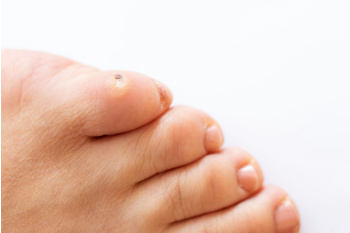
Corns on the feet are thick, hardened skin bumps that typically form on bony areas, such as on the top or sides of the toes, due to friction and pressure. The three types of corns are hard corns on toe tops, soft corns between toes, and seed corns on the soles of the feet. Foot corns develop due to wearing ill-fitted shoes, either too tight or too loose, causing rubbing and pressure. Improperly fitting socks or not wearing any socks can also lead to friction. Individuals with conditions like arthritis, bunions, or hammertoes are at higher risk. Preventing foot corns involves wearing well-fitting, comfortable shoes, avoiding high heels or pointy-toed shoes, and using corn pads for added protection. Moisture-wicking socks may help to reduce friction. If you have foot corns that are causing you discomfort or showing signs of infection, it is suggested that you consult a podiatrist for an examination and proper treatment or removal.
Corns can make walking very painful and should be treated immediately. If you have questions regarding your feet and ankles, contact one of our podiatrists of ABC Podiatry. Our doctors will treat your foot and ankle needs.
Corns: What Are They? And How Do You Get Rid of Them?
Corns are thickened areas on the skin that can become painful. They are caused by excessive pressure and friction on the skin. Corns press into the deeper layers of the skin and are usually round in shape.
Ways to Prevent Corns
There are many ways to get rid of painful corns such as:
- Wearing properly fitting shoes that have been measured by a professional
- Wearing shoes that are not sharply pointed or have high heels
- Wearing only shoes that offer support
Treating Corns
Although most corns slowly disappear when the friction or pressure stops, this isn’t always the case. Consult with your podiatrist to determine the best treatment option for your case of corns.
If you have any questions please feel free to contact our office located in Columbus, OH . We offer the newest diagnostic and treatment technologies for all your foot and ankle needs.
Corns and Calluses
A corn is a lesion that forms in the skin of the foot, and it is typically circular in shape, small in size, and thick and rough in texture. A corn generally occurs as a result of repeated pressure on the skin; one example of this is the rubbing of a shoe against the skin. Corns differ from calluses in that their central cores are harder in texture.
A corn is a relatively common condition with a wide variety of treatment options. If a corn becomes overly uncomfortable or painful, consult with your podiatrist; he can determine the best method of treatment that is appropriate for you. Corns may return if the underlying cause of its development is not treated or removed. Avoid removing corns at home, as improper removal may cause infection.
A callus, similar to a corn, is an area of skin that has become thickened due to repeated pressure and rubbing. The rubbing causes the skin to create a layer of protective skin, which is the formed callus. Calluses can differ in size between people, and they can also become painful.
Multiple treatments are available for calluses. At-home treatment and removal should be avoided, as this can potentially lead to infection. Your podiatrist can best determine the cause of your calluses and suggest the treatment most appropriate for you.
The Anatomy of a Foot Stress Fracture
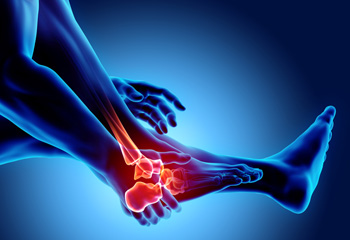
A foot stress fracture is a common injury resulting from repetitive strain and overuse of the bones in the foot. Unlike acute fractures caused by sudden trauma, stress fractures develop gradually due to the cumulative effect of repetitive stress on the bones, often stemming from activities like running, jumping, or prolonged standing. These microcracks typically occur in weight-bearing bones, such as the metatarsals, and can lead to localized pain, swelling, and tenderness. Foot stress fractures are particularly prevalent among athletes and individuals engaged in high-impact activities. Recognizing the symptoms, which may mimic other foot conditions, is essential for an accurate diagnosis and timely intervention. Rest, along with wearing proper footwear and a gradual return to activity, forms the cornerstone of treatment. If you have endured a foot stress fracture, it is suggested that you consult a podiatrist who can confirm the diagnosis and offer the treatment method that is best for you.
Activities where too much pressure is put on the feet can cause stress fractures. To learn more, contact one of our podiatrists from ABC Podiatry. Our doctors can provide the care you need to keep your pain free and on your feet.
Dealing with Stress Fractures of the Foot and Ankle
Stress fractures occur in the foot and ankle when muscles in these areas weaken from too much or too little use. The feet and ankles then lose support when walking or running from the impact of the ground. Since there is no protection, the bones receive the full impact of each step. Stress on the feet can cause cracks to form in the bones, thus creating stress fractures.
What Are Stress Fractures?
Stress fractures occur frequently in individuals whose daily activities cause great impact on the feet and ankles. Stress factors are most common among:
- Runners
- People affected with Osteoporosis
- Tennis or basketball players
- Gymnasts
- High impact workouts
Symptoms
Pain from the fractures occur in the area of the fractures and can be constant or intermittent. It will often cause sharp or dull pain with swelling and tenderness. Engaging in any kind of activity which involves high impact will aggravate pain.
If you have any questions please feel free to contact our office located in Columbus, OH . We offer the newest diagnostic and treatment technologies for all your foot and ankle needs.
